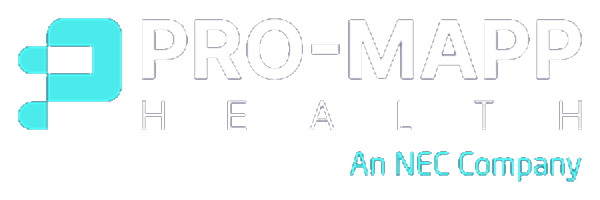This is the first in a series of blogs around PRO-MAPP’s (and the wider healthcare industry’s) actionable uses of AI. You can find the introductory background article here.
Where waiting list management has halted
Most of us have been patients in the hospital waiting room. Whether sitting directly in the lounge for emergency services or being in the backlog for a more intense planned operation, a lot of us unfortunately have tales to tell about waiting times. Some can be horror stories.
In the UK, the National Health Service has carried a huge load; a mountain of intensive human and material resource usage on both critical and non-critical patients. The average GP surgery has more than 2000 registered patients, where any tailored assessments have to account for tests, evaluations, hospital space, and rehabilitation. Orthopaedics are commonly slow due to infamous multiple assessments for a patient’s surgery validity, implant costs and staff training. So much so that the speciality comprises the nation’s longests lists. Hip and knee replacement costs 1.5% of the NHS’ entire budget. There’s also spinal surgery or life-altering trauma cases to think about.
Restricting waiting list bottlenecks and ensuring every urgent matter gets prioritised calls for operational efficiency in triage – basing assessment or event treatment on how urgent a matter is. This has a positive domino effect on secondary or tertiary care freeing up resources for trauma and orthopaedic surgery. Understanding what their issue or condition is, where they should go and who they should see takes time to guarantee that every need is met. Managing such a data-heavy task is where artificial intelligence tools can step in.
Gaining assessments in real-time
Monitoring patients takes into account their health records, past surgeries or assessments, tests, need for surgery, and ideal pathways (what preferred service they expect during their health journey). It’s not that hospitals do not have this data to hand, but legacy technology has been tough to maintain – growing monolithic structures that lose or silo patient data, and misallocate resources or operational plans to staff. There are also inconsistencies between referrals at regional practices, as outlined by the NHS’ Getting It Right First Time initiative.
Managing these queues becomes unfocused and assessing-low risk cases amasses delays that can have a drastic effect on patients: seeking private service, skipping care altogether, depending on opiates to deal with pain, and perhaps worsening their symptoms.
One true supportive behaviour of AI is its swift data-gathering techniques. Any inputs – including patient questionnaires or assessment or surgery notes – can be collated immediately into digitised databases that are simple to find, amend and share. This can flag critical patients to ensure they’re fast-tracked through workflows that can be easily communicated to both clinicians, support staff and patients themselves. In that regard, AI’s unification of data not only supports risk assessment for triage, but boosts satisfaction in exemplary patient outcomes.
AI-driven waiting list monitoring and management has already reaped rewards in making data-backed decisions in a fraction of human time. In Scotland in 2019, automated AI triage was compared to clinician’s valued opinion on referrals for gastroenterology with positive results, including facilitated communication between primary and secondary care. AI triage has also seen a 77.1% acceptance rate among researched medical staff in China.
In trauma cases where fractures or other serious injuries require immediate surgery, these reactive demands require AI to surface pathway data for smooth scheduling and resource allocation for planned elective surgery, even at short notice.
PRO-MAPP’s AI journey
GIRFT is prioritising standardisation as a way to halt unnecessary delays, where integrating this technology on a nationwide scale lies with healthcare providers supported by AI automations, including here at PRO-MAPP:
- The platform utilises AI for digital scheduling; collating results from patient intake forms to craft an assessment system for nursing staff to coordinate paths for surgery.
- AI underlines automated patient-reported outcomes, satisfaction surveys, and operative data reporting without the need for dictation.
- Assessment for surgical readiness can be decreased from around half an hour to 5 minutes, where operative reports can be billed on the same day as service.
- Through waiting list monitoring and management, we target to reduce lengths of stay for prehabilitation, as well as wasted secondary care appointments, looking to save the NHS over £1.5 million and counting.
Speeding up triage through digital AI tools is not just down to switching telephone questionnaires to online consultations through apps. It’s about putting data input into the patients’ hands, removing the need for unnecessary in-person checks with doctors and prioritising critical patients for surgery or rehabilitation.
Waiting lists are the major operational dilemmas for the NHS – where AI’s help revolves around identifying critical clients and reducing resources of staff costs that take away from efficient orthopaedic surgeries. When those are saved, staff training classes and patient accommodations can be met more suitably which, when rolled out to other institutions, can standardise data collection and usage and reduce the burden of queues all around the nation.
Next in the series, we’ll be delving into AI’s personalisation capabilities to streamline patient pathways. If you’d like to know more about how AI drives our waiting list monitoring and management, contact us today!





